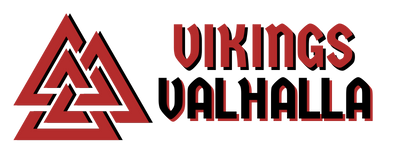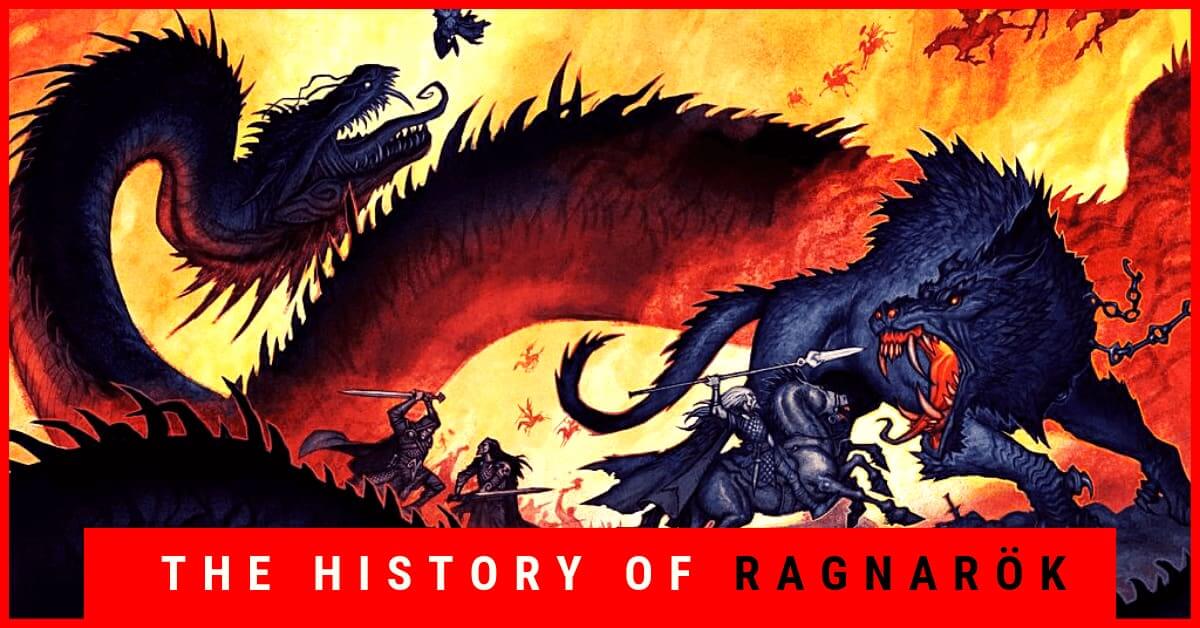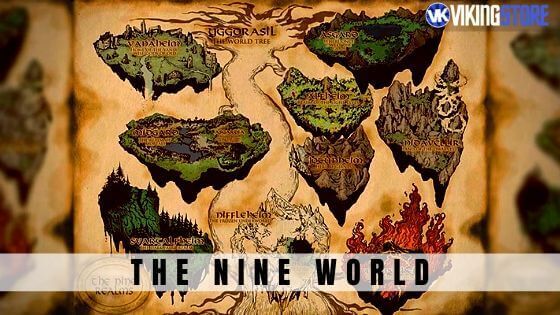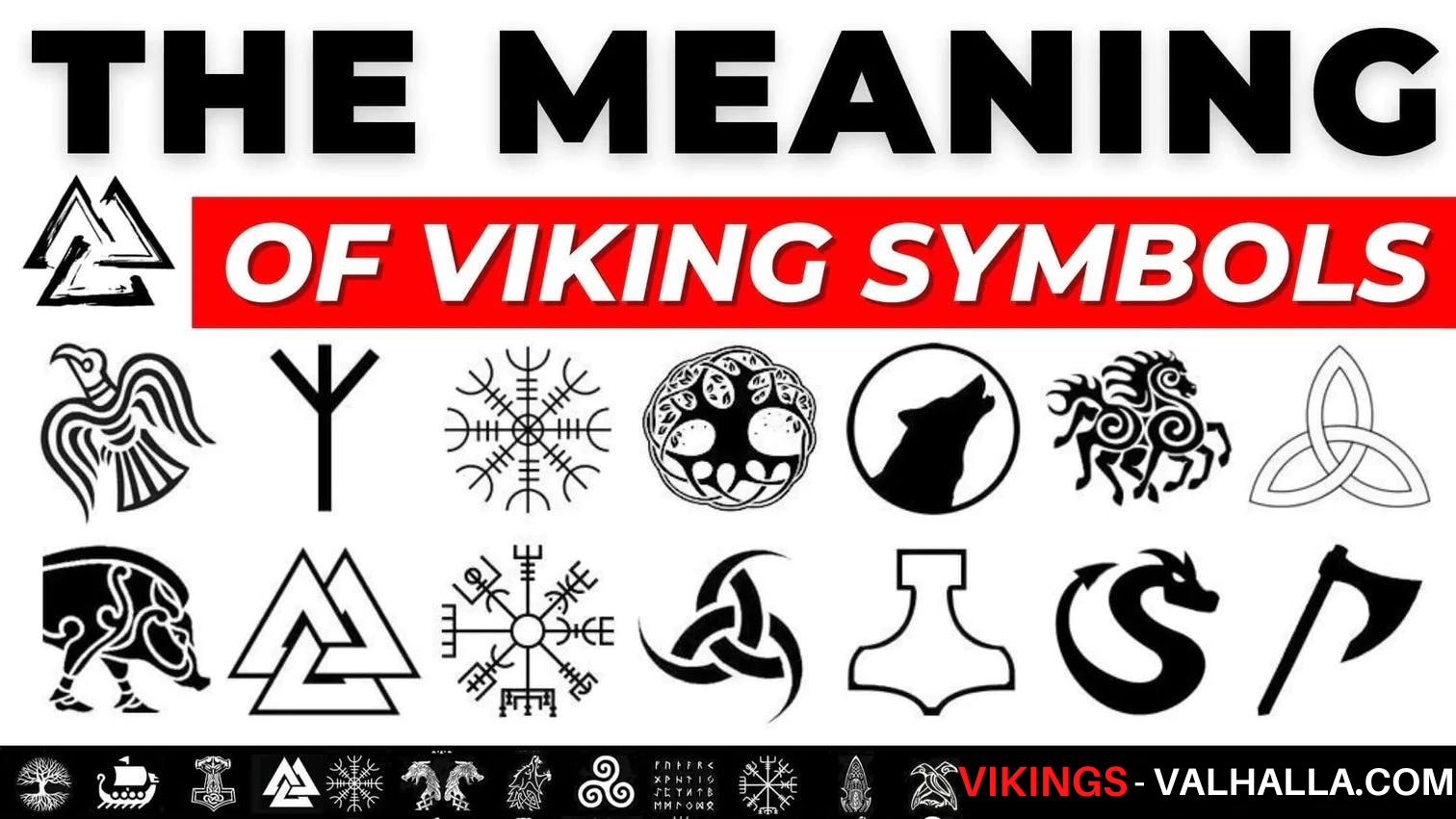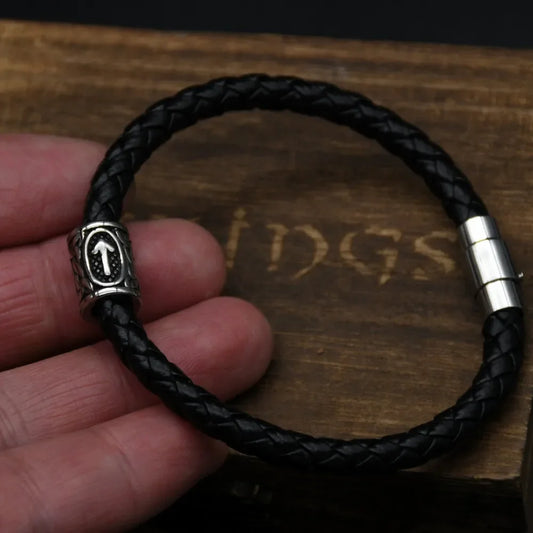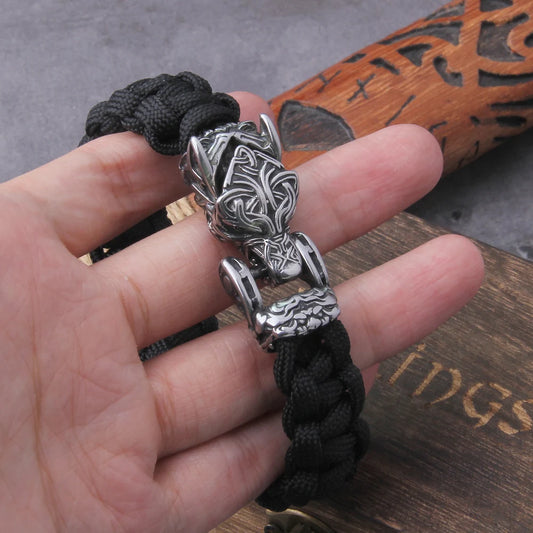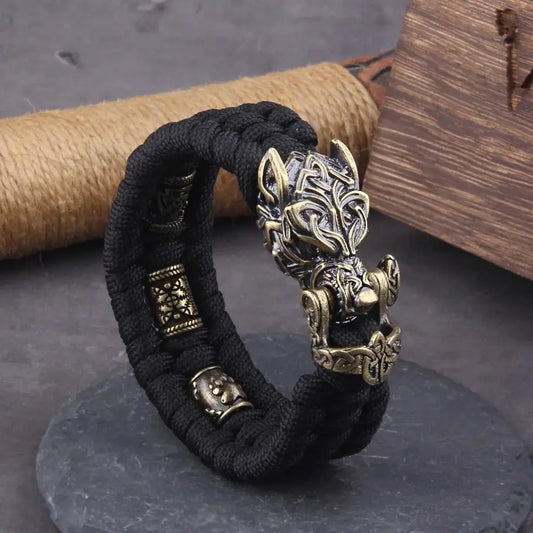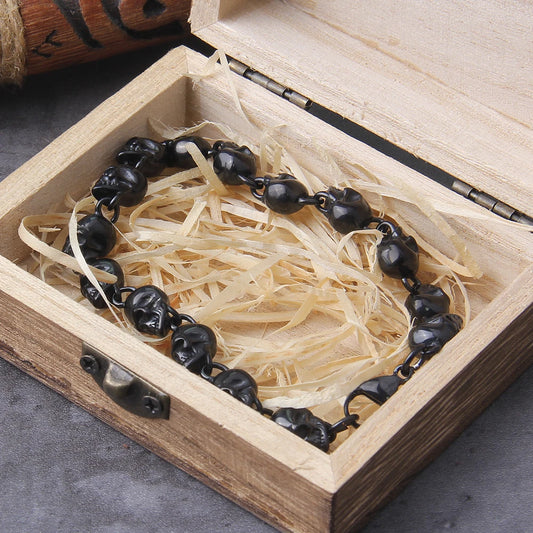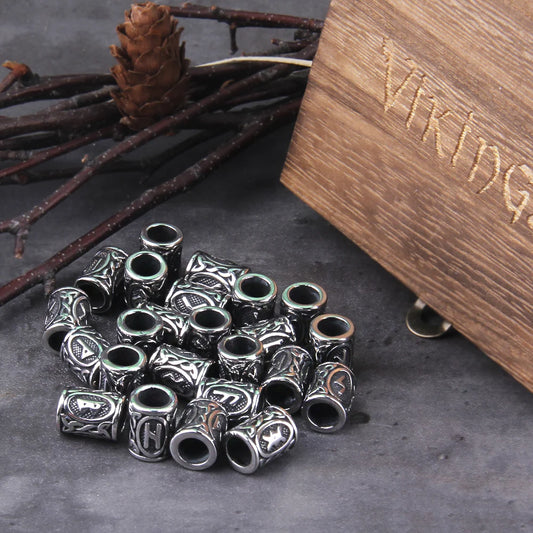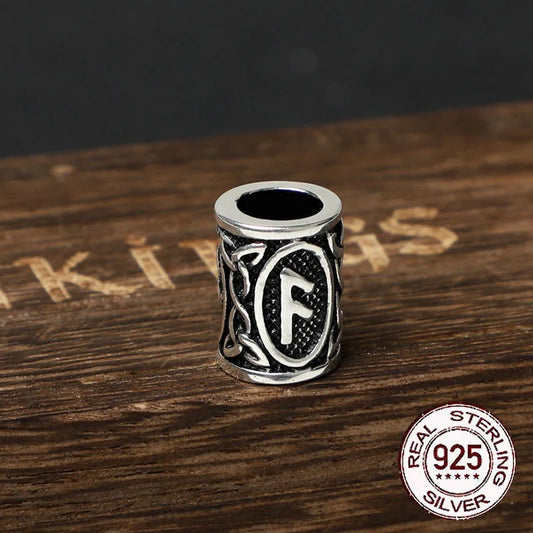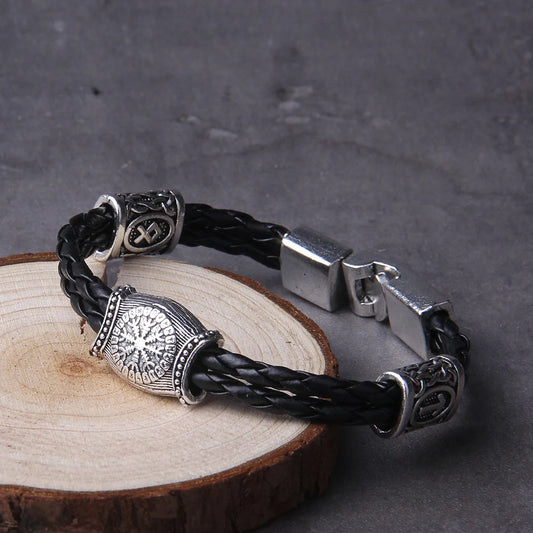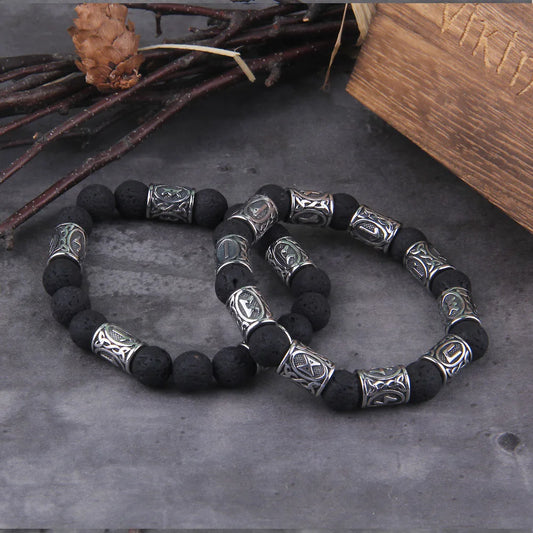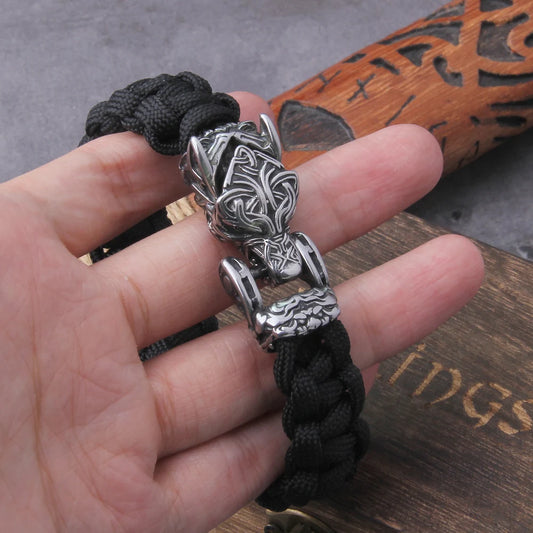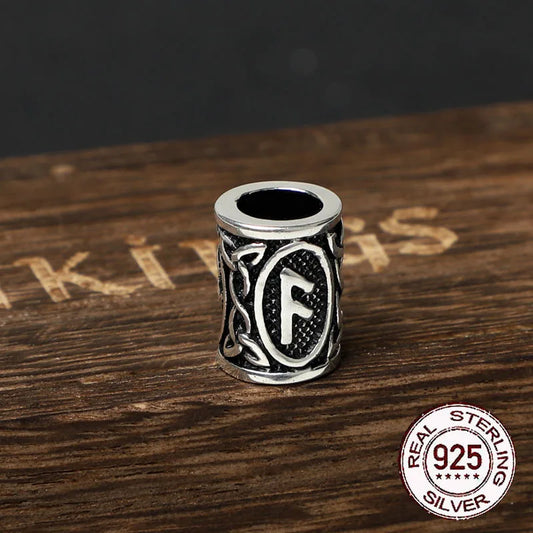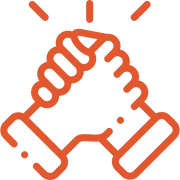Thor (Old Norse Þórr) is the god of thunder and force in Norse and Germanic mythology. His role is complex as he had influence in very different areas, such as weather, crops, protection, consecration, justice, warfare, voyages and battles.
Once the Christianization process was completed, the figure of Thor was demonized by the growing influence of Christian missionaries. After Christianity was established, remnants of his faith were preserved secretly mainly in rural areas, surviving until modern times in Germanic folklore and more recently reconstructed in various forms in Germanic neo-paganism.
Etymology of Thor
The name of the god is Þórr in Old Norse, Þunor in Anglo-Saxon, Thunaer in Old Saxon, Donar in Old Dutch and Old High German, and þunraR in Protonordic.
All these forms derive from the Proto-Germanic *Þunraz. It has the same origin as the English word thunder thunder, (even the same Spanish word "trueno") as well as the German Donner, the Dutch donder, the Swedish tordön and the Danish and Norwegian torden.
At the same time we can find interrelations, both descriptive and etymological, with the Greek mythological god Zeus, Ζεύς, from Ancient Greek, which coincides with Thor in general aspects. For example, both Zeus and Thor comprise deities of thunder, exercise a leading role, and both correspond as the most revered gods in their respective mythologies.
Thor and the Indo-European Tribes
The Indo-European and later populations had a god of the sky, lightning and thunder. Thor probably arose by inheriting the main characteristics of the Indo-European religions and developed under the regional cultural and religious idiosyncrasies of the Germanic peoples.
According to Georges Dumézil's theory there were three main gods among the Indo-European tribes, each with a particular function, and among them the god of the sky and thunder was the one who occupied the main position.
Tacitus, in his work Germania makes a Roman interpretation of the Germanic culture and identifies Donar with Hercules, from which it can be deduced that their essential characteristics were very similar. As personification of power and in terms of their attributes they shared many similarities, Thor with a hammer and Hercules with a club and both given to gluttony.
Moreover, Tacitus mentions that the Teutons worship Hercules with songs they call barditus, especially before battles. This can be compared with what happened in ancient Attica, where the Athenians went to the Delphi oracle advised by the Pean chanting a mythical incantation of victory. This Pean chant passed into the myth of Apollo and his victorious combat with the serpent Python.
Donar was the chief god of the Batavians with the center of his cult in present-day Nijmegen, the Netherlands, where two open-air temples have been found and a third in the nearby town of Elst. In Germania Inferior, dating from the early centuries, bracelets, coins and stones have been found with Latin inscriptions indicating that they had been offered to Donar.
The inscriptions mostly bore the name Hercules Magusanus, as the Romans called the chief god of the Batavians. Inscriptions with this name have been found in various places such as Houten, Tielland, Ubbergen, Westkappelle and Vetera in Holland, Bonn in Germany and Rome in Italy.
The reason why his name was so widely dispersed is because the Batavians entered the service of the Romans and thus spread it throughout the empire, and Donar being a god of battle, he was particularly popular among the Batavian warriors.
The idea of a sky and storm god with a throwing weapon such as Thor's war hammer and with a chariot is an ancient god image. The Hittite deity Teshub is depicted in much the same way, except with an axe, and the Hindu god Indra also possesses a chariot and his main weapon is lightning.
In many Scandinavian paintings on rocks and tombstones male figures are found raising hammers or axes and in some cases also labrys or destras, sometimes in phallic representations, which can be interpreted as a symbol of power and represent a deity. Thor's hammer in the northern German area and Donar's club in the south were during late paganism, later than the petroglyphs, a fertility amulet, particularly female.
Other parallels to Indus myths is that of the fight of the thunder god with serpents or dragons. In the case of Thor fighting with the Midgard serpent, for the Greeks there are analogous cases such as the fight of Apollo against Python, Herakles against the Hydra of Lerna, in Hittite mythology the god Teshub and the serpent dragon Illuyanka, and in Hindu mythology the fight of the god Indra with the dragon Vritra as told in the Rig Vedá. The myth of the struggle with the serpent is an evident characteristic in all these cultures, as a symbol of struggle in the dominant region.
There is also a certain parallelism between the forms of dialogue between Thor and Odin in Hárbardsljód, with those recorded between Indra and Varuna according to the Rig Veda. According to Dumézil these dialogues do not show an aggressive tone of conflicts between different cults, but rather an ancient form of dialogue based on the different nature of the gods and their function in different areas.
Most of Thor's anthropomorphic features are comparable to Indra's with respect to hair and the use of beard. Indra is blond-haired and bearded as described in Rig Veda, while Thor is red-haired and both are in essence philanthropic gods.
There are similarities in the veneration of trees consecrated to the god of thunder. The Germans venerated sacred forests and the tree of the thunder god was the oak. For the Greeks Zeus also ruled over thunder, lightning and rain and was sometimes known by the nickname "Tonante" or "Tronituante".
Oaks were the trees consecrated to Zeus and even had an oracular oak in Dodona, his Roman parallel Jupiter, who was also worshipped as the god of rain and thunder was likewise associated with them. The Slavs venerated these trees which were consecrated to the thunder god Perun, images of which have been found in Novgorod with an axe with thunderbolts in his hand. The Lithuanians had as their main deity Perkunas, the god of thunder and lightning, to whom, like the previous ones, they consecrated the oaks.
Thor's Function
The idea of Thor among the Germanic peoples was uniform, but there were many developments and changes, e.g. in his position and rank, particularly between the Roman period, the period of the great migrations and the Viking Age.
Odin occupies the highest position within the Norse pantheon, replacing the old sky god Tyr, so that Thor is on a lower level of hierarchy, at least as related in the scaldic poetry. Nevertheless Thor was the main god worshipped by the peasants.
He had temples, sacred groves, and many place names still present mostly in Norway, Sweden, Iceland and England refer to his name. The image of Odin as a major god was common mainly among the nobles and was consequently reflected in the poems of the Scalds, which had a great impact later in the Eddas, written in the 13th century.
As the process of Christianization of the Germanic peoples and tribes went hand in hand with the destruction of everything pagan, very little information about the god was preserved. The major source of information about Thor is found in the Icelandic sagas and the Eddas, however many of these works were not free from Christian influences.
Thor had a wide area of influence from controlling the weather and crops to consecration, justice, protection and battles. For this reason he was often regarded as a supreme deity. The most obvious attribute of the god is his warrior aspect, a great number of myths depict him cleaving his way through hordes of giants with his war hammer.
However, Thor in the role of warrior fulfills a protective role, unlike Odin who called his followers to battle for death and glory, so Thor had a more widespread cult among the more peaceful communities of peasants and artisans. For the Icelanders Thor was the patron of the law, and the Thing Assembly opened on Thursdays in his honor and was invoked in most oaths.
In Haustlöng one of the kenningars for the god is "deep thinker", and while on most occasions he prefers direct action to strategy, numerous myths illustrate his wisdom, as is the case in the Eldic poem Alvíssmál where Thor tricks the wise dwarf Alvíss, suitor of his daughter, with a guessing contest that Thor is responsible for extending until morning so that the first rays of the sun turn the dwarf to stone.
In the Gautrek saga it is related that Thor challenges Odin about the fate of the giants' grandson, Starkad, with a series of curses that counteract many of the blessings bestowed upon him by Odin. In addition, Thor is associated with the runes and with consecration, he is also possessed of magical abilities, the resurrection of his goats, his change of size and shape.
As a sky god, he also has a fertility role. Lightning from summer storms was believed to ripen crops. Thor's hammer on the bride's skirt, as related in Þrymskviða, suggests a fertility ritual and a symbolic interaction between heaven and earth.
Thor's Family
Thor is the son of the Supreme god Odin and the goddess Jord, personification of the Earth. His wife is Sif, with whom he had a daughter named Thrud, who is a Valkyrie whose name means "strength" or "power". With the giantess Járnsaxa he had two sons named Modi and Magni. Their names mean "Wrath" and "Mighty".
The names of his sons seem to be personifications of all the attributes that characterized Thor. In addition, the god also has a stepson named Ullr, son of Sif whose father is not mentioned.
Thor's Attributes
Thor's Hammer
Thor's most emblematic object is his short-handled war hammer, called Mjolnir, created by the dwarves Sindri and Brokk. It has the property of never missing its target and after being thrown it always returns to the hands of its owner, it can also shrink and be carried concealed in clothing and can also be used to throw lightning bolts. To lift his hammer, Thor uses a belt that increases its strength, called Megingjörð, and a pair of special iron gloves.
Mjolnir is his main weapon when fighting giants, being rated by the gods as the most precious of all the dwarves' works and the most powerful weapon possessed by the gods in their defense against the forces of Jötunheim.
The hammer became a symbol of the god and a popular amulet and piece of ornament during the Viking Age and an icon of Norse and Germanic paganism.
Thor's Chariot
Thor travels in a chariot that is pulled by a pair of rams called Tanngrisnir and Tanngnjóstr. They had the peculiarity that Thor could cook them and then if he needed to continue his journey, he would cover the bones with the skin and use the regenerative power of his hammer to bring them back to life.
On one occasion when he asked for lodging in the hut of some peasants for the night, he cooked the goats and one of the sons of the family, named Þjálfi, broke one of the bones, so that when Thor brought them back to life the next morning, he noticed that one of them was limping.
Thor's anger was enormous, and to remedy the problem Þjálfi and his sister Röskva became his servants and accompanied him on many of his journeys. The scaldic poem Haustlöng relates that the earth was ravaged and the mountains cracked as Thor rode in his chariot.
Thor's Hall
Thor lives in Asgard, in the realm of Þrúðheimr, meaning "Home of the Force." There he lives with his wife Síf and his children in the palace called Bilskirnir, which, as related in Grímnismál, is the largest of all buildings and has 540 rooms.
Thor in the Poetic Edda
Völuspá
Völuspá is the first poem of the poetic Edda and one of the best known. In this text Odin consults a Völva who tells him all her knowledge about the past and the future of the world and Thor is mentioned on several occasions.
The first mention of the god is made when he tells how he killed the disguised giant who had rebuilt part of the walls of Asgard and had asked Freya in return.
Loki, who had devised that plan, finally manages to stop the giant from completing the construction and therefore cannot take Freya, however the giant takes off his disguise and full of anger threatens the gods, but Thor does not take long to appear and kill him with his hammer.
In addition, at the end of the poem the events that will happen during the battle of the end of the world, the Ragnarök, are told. The völva who knows the future describes the events of this battle and among them, the death of Thor that would occur as soon as he would kill the giant Midgard serpent, Jormungandr, which upon dying expels its venom on Thor, who retreats nine steps and falls dead.
Hárbarðsljóð
In Hárbarðsljóð tells of a quarrel between a rough boatman named Hárbardr and Thor who was returning to Asgard after fighting giants in Jotunheim. The boatman appears to be Odin in disguise although some commentators such as Vyktor Rydberg argue that the role seems more suited to the deceitful god Loki.
Thor identifies himself and mentions his descent while the ferryman claims to be called Hárbardr. In the verbal dispute the ferryman turns out to be more cunning than Thor as he knows much about his adventures and downplays them. Finally he refuses to approach the shore and help him leave the land of his enemies the giants, prolonging the dialogue and taunting the god with sly and irritating remarks.
Grímnismál
In the poem Grímnismál a list is made of the abodes of the gods and among them a brief mention is made of Thor, citing the place where the god dwelt in his palace called Bilskirnir in Thrudheim. Later there is a rather cryptic stanza referring to the god crossing the bridge of Bifrost as it burns in flames.
Hymiskviða
Hymiskviða is a poem made up of fragments of myths with very little structure, where the scenes follow one another in an unnatural way. It tells of Aegir's concern that he does not have a cauldron large enough to brew beer for all the Aesir who come to visit him. Tyr remembers a large cauldron in the possession of the giant Hymir and together with Thor they make their way to his abode. After arriving Thor eats so much that there is nothing left for the others so they must go fishing.
Then it is told that using the head of an ox as bait Thor catches the Midgard serpent, but the giant in fear cuts the line and the god, seeing that his prey escapes him, throws his hammer, causing the serpent to sink into the depths causing tremors in the earth. After returning the giant challenges Thor in his strength by challenging him to break a magic cup.
Thor knew that this cup could only be broken if it was thrown at the giant's head, so he threw it at him and shattered it. After this the giant gives them the huge cauldron, and after his departure he makes his way through hordes of giants. Finally he returns to Aegir's abode and gives him the cauldron to brew beer.
Other similar but less developed versions of this story were preserved in the sclavic poems Húsdrápa and Ragnarsdrápa, both preserved in the prosaic Edda.
Þrymskviða
In the poem Þrymskviða it is related that the giant Þrymr had stolen Thor's hammer, Mjölnir and intended Freyja as his wife as payment for returning it. Instead of Freya, the Aesir managed to convince Thor to dress as a bride and Loki as his maid and both thus disguised travel to Jötunheim for the "wedding".
Thor's identity is comically pointed out as at the reception ceremony the god eats a whole ox, while Loki tries to give barely believable explanations for such strange behavior of a lady by saying that her hunger is the result of the long journey and anxiety about the wedding.
The giants somewhat accept these arguments and when they plan to consecrate the union, the giant places the hammer Mjölnir in the skirt of the supposed bride, whereupon Thor immediately takes it, rips off his bridal disguise and kills him, doing the same with the rest of the giant's relatives invited to the meeting.
Alvíssmál
In Alvíssmál it is related that Thor's daughter, Þrúðr was betrothed to the dwarf sage Alvíss, a fact that occurred during her father's absence. The god devised a plan to derail the dwarf's marriage plans. He told Alvíss that because he was of very short stature, he must then demonstrate his wisdom. The dwarf accepted the challenge and Thor began a test of questions and answers that he took care to extend until dawn, so that when the first rays of the sun rose he was turned to stone, as happened to all dwarves in contact with sunlight.
Lokasenna
In Lokasenna the gods insult Loki during a meeting held in Aegir's abode, to which Loki, who had not been invited, goes, kills one of the servants and insults the gods. In Lee M. Hollander's translation of the poem, he makes it clear that not all the accusations Loki makes were accepted by popular tradition and in many cases it seems that the gods do not bother to refute them.
Thor makes his appearance near the end of the play after the gods in turn attempt to appease Loki and avoid quarrels in the host's house, as the rules of hospitality dictate. Thor, ready for direct action, threatens him with his hammer. Loki continues to mock him, telling of the time when during an earthquake he took refuge in what turned out to be the finger of a giant's glove, and of his gluttony, but before a new threat to silence him with his hammer, Loki decides to withdraw, recognizing that only Thor provoked fear in him since he was a great warrior.
Thor in the Prose Edda
Gylfaginning
Gylfaginning is the first part of the prosaic Edda and it recounts Gylfi's journey to Asgard, and his description of the gods, among whom Thor is mentioned.
Thor sets out on a journey with Loki to the land of the giants, Jotunheim, to fight them. Traveling in their chariot, at nightfall they stop at the house of some peasants asking for hospitality.
Thor slaughters their goats and prepares them for dinner with the peasant families. However, their son, named Þjálfi breaks one of the bones and when the next morning, the god places the hide on the bones and invokes the power of his hammer to bring the goats back to life, he notices that one of his animals is limping.
The god is filled with anger and flashes from his eyes, so the farmer's son, frightened, confesses that he is the one who has broken it. To appease the god's anger he and his sister Röskva become his servants or thralls. From that moment on they accompany him on many of his days of combat against the giants.
After that incident he leaves the farmer's house with Loki and the two servants, leaving his goats behind, and travels eastward, into the land of the giants, and across the sea they reach an unknown land.
As soon as night falls they seek shelter and find a very large hall where they decide to spend the night. At midnight a violent earthquake occurs and then Thor and his companions take refuge in a side room, Thor remaining at the entrance ready to defend himself with his hammer.
At dawn they encounter a giant sleeping near them, and discover that they had spent the night in the thumb of the giant's glove. Thor approaches and asks the giant his name and he says his name is Skyrmir and recognizes the god immediately, proposing to share his provisions, though he immediately moves away.
He returns in the evening and tells Thor to take provisions from his bag while he goes to sleep. However, the god cannot undo the knot in the giant's bag and suspecting the giant's mockery decides to strike him with the hammer, which is unsuccessful as the giant barely wakes up and asks if he has dropped a leaf.
The next morning the giant hurries the travelers and tells them that they must meet the lord of those lands, the giant Utgard-Loki.
They arrive at a huge castle in the middle of a plain belonging to King Utgard-Loki, who welcomes them into his enormous hall. He then invites the newcomers to participate in the competitions they propose and the first to accept the challenge is Loki, who says that no one can eat at his speed. However the king calls Logi who eats the meat, the bones and the board on which he is served.
Then the young Þjálfi manifests that he is able to run very fast, and the king invites Hugi to the challenge, who in the competition doubles in speed the servant.
Finally comes the challenge for Thor who was very thirsty and says that no one drinks like him. Immediately a servant of the king brings him a horn and tells him that the great drinkers empty it in one gulp; the god does not see it too big and drinks until he runs out of air, but the level of drink remains almost constant, he tries two more times and barely manages to lower it a little.
The king says he is disappointed as he had heard great stories about him and invites him to lift his big cat, but the god can barely lift it a foot off the ground.
The god gets angry and tells him to introduce him to someone to fight, who is encouraged to defeat him, to which the king calls an old woman named Elli who he says has defeated many men. Finally the struggle lasts a while until the old woman defeats the god.
After spending the night the travelers are ready to leave in amazement at the way they had been humiliated, but the next morning Utgard-Loki accompanies them to the outskirts of the castle and tells Thor that he had never met anyone so strong and tells him that he had been afraid of his might.
He confesses to him that everything had been done with magic tricks and had been optical illusions, that the knot in the giant's bag was sealed with iron and that the giant was him using magic tricks, and that the hammer blow he had given him had split a mountain in three.
He also confessed to him that all the things they had competed against were magic tricks, Logi, who devoured everything, was actually a personification of fire and Hugi the swift, was his thought.
He tells him that it caused him great astonishment that he managed to lower the horn a little with the drink since it was connected to the ocean and that when they reached the coast they would see how much the waters had lowered, this being the origin of the tides.
The cat that he had barely been able to lift, was an illusion of the Midgard serpent, which surrounds the world and he had managed to lift it almost to the sky. Finally, the old woman with whom he struggles and ends up falling, leaning on one of her knees, was a personification of death.
The giant asks them never to return and the god with great anger for having been deceived decides to hit him with his hammer, but instantly the giant and the castle disappear, and they leave again to return.
Later the fishing of the Midgard serpent is told, similar to Hymiskviða in the poetic Edda, and at the end Thor is mentioned as sanctifying Baldr's funeral pyre.
Skáldskaparmál
In Skáldskaparmál among the lists of kenningars for the gods are references to how Thor may be designated.
Later in the text the story is told of the death of the giant Hrungnir at the hands of Thor. The giant had challenged Odin in a contest between his horse "Golden Mane" and the god's horse, Sleipnir. Odin wins the race, but the giant continues to the gates of Asgard, where the god invites him to come in and drink beer.
However, the giant gets drunk and begins to aggravate the gods and defy them, until Thor arrives and forces him to retreat. Still the giant challenges Thor to battle when he returns to Jotunhëim for his weapons.
The news spread among the giants who realized that the stakes were high and planned how to hurt Thor even if Hrungnir perished.
So in Grjótúnagard they created a huge clay giant named Mökkurkálfi, who given his size had to be fitted with the heart of a mare. Hrungnir had a three-pointed heart of stone, his head and shield were also made of stone and his weapon was a whetstone, and at his side was the clay giant.
Thor went to Þjálfi, and the latter in agreement with the god ran up to the giant and told him that he had better stand on the shield as Thor would appear from beneath the earth, to which the giant heeded.
The god appeared wielding his hammer, to which the giant threw his stone at him, but the blow of the hammer split the stone and continued until it hit the giant's head which shattered. While Þjálfi struck the clay giant, who, terrified at the sight of the god, died without a fight.
In the skaldic poem Haustlöng of the prosaic Edda, written by the Norwegian skald Þjóðólfur úr Hvini also describes the death of the giant Hrungnir at the hands of Thor, but no mention is made of Þjálfi.
In Skáldskaparmál it is also related when Loki cut off the golden hair of Sif, Thor's wife. When the god learned what happened he threatened Loki to break all his bones if he did not find a solution for his mischief.
Faced with this threat, Loki went to the sons of Ivaldi, famous craftsmen, and they made him a hair of thin golden threads that when Sif put it on, she recovered it as her natural hair.
Þórsdrápa
Þórsdrápa tells how Loki incited Thor to go against the giants, without his hammer and without his power belt. This was actually a trap planned by Loki, who had been trapped by the giant Geirröd and had made him swear to lead Thor into battle under those conditions.
On the way they stop at the abode of the giantess Gríðr who, knowing of the deception, assists Thor by giving him iron gloves, a magic belt and a staff, as told in Skáldskaparmál.
Thor crosses the oceans to Jotunheim, with Þjálfi hanging from his belt, and when he reaches land the giants of Geirröd's cave await him, but the god and his servant manage to defeat them with ease.
Finally Thor is received in the abode of the giant, and sees how his chair begins to rise in order to crush him against the ceiling, to which the god uses the staff given by the giant to stop his ascent and fall on two daughters of the giant, called Gjálp and Greip, killing them.
Then the giant throws him a piece of red-hot iron which the god catches with iron gloves and although the giant hides behind a column, Thor throws it with such force that it pierces the column and Geirröd himself, killing him.
Cult of Thor in Europe
Thor's Oak
Thor's oak was an ancient tree sacred to the Germanic Chatti tribe, ancestors of the inhabitants of Hesse, and one of the most important sacred sites of the Germanic pagans. Its felling in 723 marked the beginning of the Christianization of non-Franconian tribes in northern Germany.
The tree was located in the village of Geismar, today part of the town of Fritzlar in northern Hesse, and was the main point of veneration of Thor, who was known to the West Germanic tribes as Donar.
Boniface came to the area with the aim of converting the North Germanic tribes to Christianity, using the Frankish fortified camp of Büraburg on the opposite side of the Eder River as a base.
He felled the oak tree revered by the local inhabitants in an attempt to convince the population of the superiority of the Christian god over Thor and thus convince them to be baptized and convert to Christianity. Boniface used the oak wood to build a chapel in Fritzlar, founding a Benedictine monastery and thus establishing the first diocese outside the borders of the former Roman Empire.
Temple of Upsala
Between 1072 and 1076, Adam of Bremen recorded in his Gesta Hammaburgensis ecclesiae pontificum that there was a statue of Thor in the Temple of Upsala.
Thor's Day
Þunor, its Anglo-Saxon name gave rise to the name to the day Þunresdæg, meaning Þunor's day, which in modern English is thursday (Thursday). Þunor is also the origin of the English word thunder.
"Thor's day" in Old Norse is Þórsdagr, in Faroese Hósdagur, in English Thursday, in German Donnerstag (meaning "thunder day"), in Dutch Donderdag (meaning "thunder day"), in Finnish Torstai and in Swedish, Danish and Norwegian Torsdag.
The day was considered of paramount importance in the week, so much so that even as late as the 7th century, where Elegius reproached his congregation in Flanders for continuing their native practices of recognizing Thursday as a holy day even after its Christianization.
Archeological findings of Thor
Thor was a very popular deity for the Germanic peoples and numerous representations of the god and his exploits survived many years later.
Icelandic Thor Statue
In Iceland, a bronze statue of Thor popularly known as the Eyrarland Statue, in which the thunder god appears seated (about 6.4 cm), dating from around the 10th century, was found on a farm near Akureyri and is on display in the National Museum of Iceland. Thor is found holding his hammer, Mjolnir, sculpted in the typical Icelandic, cross-shaped form.

Fibula of Nordendorf
The Nordendorf fibula is a carved human bone, of Alamannian origin, dating from the 7th century. It was found in Nordendorf near Augsburg, Bavaria and has in ancient futhark an inscription mentioning Donar, the West Germanic name for Thor.

Mjolnir Pendants
Mjolnir pendants were widely popular in Scandinavia and were used in blóts and other sacred ceremonies such as weddings.
Many of these pendants are also found in tombs and have a loop so that they can be worn as necklaces. They were discovered mostly in areas with a strong Christian influence including southern Norway, southeastern Sweden, and in Denmark.
By the late tenth century, these replicas appear with greater uniformity in Mjolnir design over earlier centuries, suggesting that it was used as an accessory in defiance of the Christian cross.

Thor's Runestones
Most of the runestones were erected during the 11th century and thus coincided with the Christianization of Scandinavia. Except for the Altuna rune stone that describes a myth concerning Thor, there are only six runic inscriptions that seem to refer to him and five of them invoke him to consecrate the stones. Three of the inscriptions are found in Sweden (the Rök stone, Sö 140 and the Velanda stone) and three in Denmark (Dr 110, Dr 220 and the Glavendrup stone).
Thor's struggle with the Midgard serpent is recorded at Hymiskviða and can be found depicted in numerous images on runic stones and stelae located in England, Denmark and Sweden.
In the English village of Gosforth, Cumbria, the remains of a 10th century carved stone depicting Thor and Hymir fishing are found along with numerous Norse depictions.
In Denmark, a church in the small Norse village of Hørdum houses the remains of a stone depicting Thor and Hymir on the Midgard serpent fishing trip. Thor is wearing a distinctive pointed helmet that has also been found in other depictions and has caught the Midgard serpent while Hymir sits beside him.
The Altuna stone in Uppland describes Thor fishing for the Midgard serpent. Although Hymir is absent, it notably highlights Thor's foot breaking the floor of the boat during the intense fight.
In Sweden there are two stones depicting this legend. They were created sometime between the 8th and 11th centuries, the lower left part of the Ardre stone in Gotland has sometimes been interpreted as describing not only the fishing trip but also references to the previous death of the ox that was used as bait, probably as part of an earlier version of the tale.

Skog church tapestry
A part of the 12th-century Swedish tapestry from Skog Church depicts three figures sometimes interpreted as allusions to Odin, Thor, and Freyr. The figures match 11th-century descriptions of the arrangement of statues recorded by Adam of Bremen in the temple at Upsala and written records of the gods during the late Viking Age. The tapestry originates from Hälsingland, Sweden and is in the Swedish National Museum of Antiquities.

Kvinneby Amulet
The Kvinneby amulet includes runic inscriptions. There are different theories about the exact words of the inscription but all agree that Thor is invoked to protect with his hammer. According to Rundata, the inscription reads:
Here I carved protection for you, Bófi, with/.... ... ... to you it is safe. And may the lightning keep all evil away from Bófi. May Þórr protect him with his hammer that came from the sea. Stay away from evil! You will get nothing from Bófi. The gods are under him and above him.
The amulet was found in the mid-1950s, buried in the ground in the village of Södra Kvinneby in Öland, Sweden. The amulet is a copper square measuring about 5 cm on a side. Near one of the edges there is a hole, so it was presumably worn as a neck pendant.

